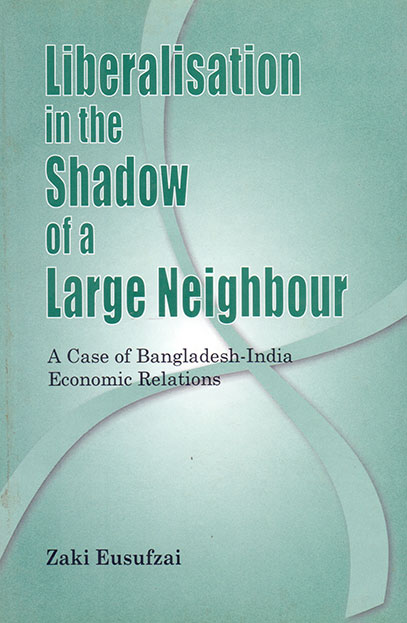
- Shop
- Liberalisation in the Shadow of a Large Neighbour: A Case of Bangladesh-India Economic Relations
Liberalisation in the Shadow of a Large Neighbour: A Case of Bangladesh-India Economic Relations
https://uplbooks.com/shop/9789840515356-liberalisation-in-the-shadow-of-a-large-neighbour-a-case-of-bangladesh-india-economic-relations-6511 https://uplbooks.com/web/image/product.template/6511/image_1920?unique=3d813f3
| Language: English |
Tags :
Book Info
In recent years issues concerning bilateral trade between Bangladesh and India have received heightened interest and come under close scrutiny. Bangladesh's trade deficit with India has been increasing at an accelerated rate in recent years. The deficit grew most visibly in the 1990s when Bangladesh started to liberalise at a rapid pace with the deficit in formal trade balance rising from 200 million to about a billion within the scope of last five years. If informal trade is factored into the picture the current level of bilateral trade deficit would be around a staggering 2 billion dollars. Such a state of affairs has given rise to concern both at the policy level as well as at the level of public perception. Although such deficits are largely market driven, it has important implications on the economy of Bangladesh in terms of domestic agriculture sector development and industrialisation. An analysis of the fundamental determinants of the deficit, the role of real exchange rate, productivity differentials between these countries and differential pace of liberalisation between the two countries are some of the key factors which serve to answer the nature and dynamics of trade between the two countries. This volume presents an in-depth analysis of these factors and traces the shifts and structural changes overtime in the Indo-Bangladesh trade by taking a holistic perspective. The issue of financing of the trade is also given due attention in the analysis. The author also examines the potential for co-operation within the SAARC and on bilateral basis. The volume presents a wealth of information and should be useful to policy makers, researchers, academics as well as the general readership who intend to go beyond the rhetoric and wishes to understand the substance of the discourse on this important issue.

Zaki Eusufzai
Dr. Zaki Eusufzai is an Associate Professor of Economics at the Loyola Marymount University in Los Angeles, USA. His fields of specialisation are in International Trade and Open Economy Macroeconomics. He received his Honours Degree from Dhaka University and his Ph.D. from UCLA. This study was conducted while he was a Visiting Research Fellow at the Centre for Policy Dialogue.


